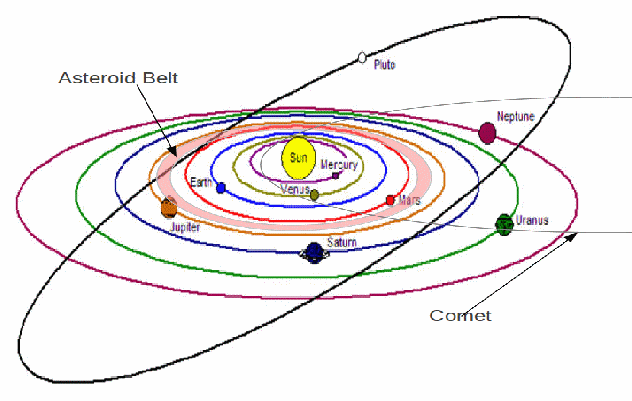The solar system consists of the Sun, the planets that orbit the Sun, moons that orbit the planets, comets, asteroids, meteors and some dust and gas.
The Sun is a huge ball of hydrogen and helium gas. Hydrogen is burnt in the core of the Sun in a process called nuclear fusion, and turned into helium.
There are eight planets – Mercury, Venus, Earth, Mars, Jupiter, Saturn, Uranus and Neptune. Pluto used to be classified as a planet but was decided to be too small. Pluto's orbit is at an glae to the plane of all the planets ashown in the diagram below.
Some of the planets have moons and pieces of rock orbiting them. Earth has the moon, and Jupiter have 4 moons of a decent size. Mars has two potato shaped rocks orbiting it. Some of the other planets also have moons and even the non – planet Pluto is orbited by a moon called Charon.
There are an unknown number of comets in the solar system. They orbit the Sun, some approaching close enough to be seen in the night sky, with long tails as they approach the Sun and partially evaporate. Some appear periodically – Halley's comet being the best known, appearing once every seventy six years – and some appear once every few million years.
Meteors are sizeable chunks of rock. Though there are asteroids throughout the Solar System, most of them occur between the orbits of Mars and Jupiter.
Meteors are small particles of dust or rock that burn up in the Earth's atmosphere. Typically they are pieces of comet evaporated by the Sun's heat.

